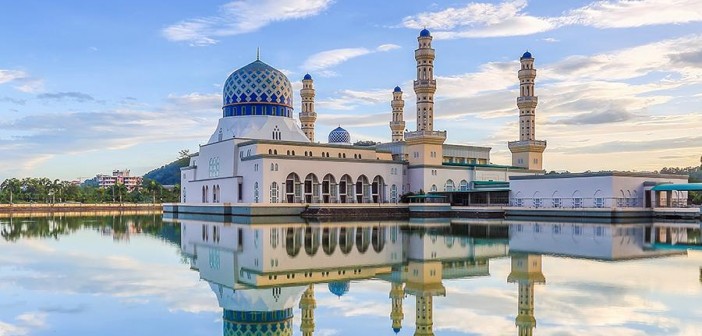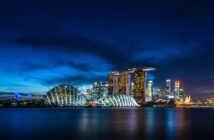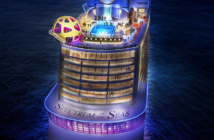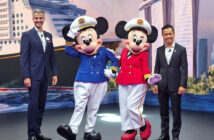Malaysia has set its sights on becoming the new cruising hub of Southeast Asia.
Sometimes considered a cruising adjunct to Singapore, its super-efficient southern metropolis neighbour, Malaysia wants to become the premier cruising destination in the region.
With myriad rich cultural and adventure attractions, it has a strong case as the regional destination.
The Malaysian transport ministry has announced plans to turn three ports – Kota Kinabalu, Kuching and Labuan – into modern cruise terminals, capable of berthing large ocean-going ships.
“Malaysia wants to attract international cruise lines to homeport here – this is to help it develop as one of South East Asia’s major cruise hubs,’’ a source from the transport ministry said.
The steep rise in the number of international and domestic cruise passenger arrivals has also given the government the impetus to focus on cruise tourism. Malaysia is now in the pole position to become a regional cruising hub on its own steam.
Besides the three ports in Sabah, Sarawak and the Malaya Peninsula of Borneo, cruise lines have traditionally called at Malacca, Klang and Penang on the western coastline of Malaysia.
So what can cruisers expect? Cruise&Travel Asia took a look at all six Malaysian ports to find out what attractions they offer to international cruise lines and passengers.
Kota Kinabalu
In Sabah – known as the “land below the wind” for its location below the typhoon belt – the cruise port is about 2km from the capital KK town centre. Sabah, which occupies the eastern part of North Borneo, is mountainous and largely carpeted by lush tropical rain forests. It has a population of almost two million people, made up of 32 ethnic communities. Kinabalu Park is a UNESCO Heritage site because of its diverse plant and wildlife. Sipadan Island off the south eastern coast of Sabah is one of the top five dive areas in the world. Its underwater geography attracts a proliferation of wildlife from leatherback turtles and barracuda to white-tipped sharks. Mount Kinabalu is the centrepiece of Kinabalu Park and one of the highest mountains in Southeast Asia. KK town is small and you can walk from one end to the other in less than half an hour.
Kuching
Kuching in Malay means cat. So it’s of little surprise there is a Kuching Cat Museum. There are two explanations for naming the town Kuching. Firstly, it comes from the Chinese word “kochin”which means harbour. Secondly, the town was named after a local fruit called “mata kuching” or cat’s eye, a close relative to the lychee fruit. With a population of 650,000 the focal point of Kuching is the river. Kuching is on the Sarawak River and is the major food destination and gateway for travellers visiting Sarawak and Borneo. From the river, you will see picturesque Malay kampungs (villages), a Victorian fort, a golden-domed mosque and a whole street of 19th century Chinese shophouses. The surrounding landscape including the Kuching Wetlands, Bako National Park (home of the rare proboscis monkey), Semenggah Wildlife Centre with the resident orangutans are some of its main attractions. The town is dotted with hundreds of Iban and Bidayuh longhouses which are within easy travelling distance.
Labuan
It is made up of Labuan Island and six smaller islands located on the coast of Borneo in East Malaysia. No trip to Labuan is complete without a visit to Kampung Air (the water villages). Two villages, Kampung Bebuloh and Kampung Patau-Patau built their houses right at the water’s edge. Made of wood and sitting on high stilts, the houses are joined together with a maze of wooden walkways. Almost every house has its own boat. Labuan is also famous for Tanjung Kubong Tunnel, a network of underground tunnels for coal mining operated by various British companies. Across the road there’s the Chimney, a well of about 30 metres deep which can also be explored. Then there’s the beautiful Layang-layang beach, a nice spot for sunsets and Labuan Beach for picturesque picnics.
Port Klang
One of the main reasons why most cruise lines call at Port Klang is its close proximity to the bustling capital city, Kuala Lumpur. Its contemporary charm and intoxicating blend of Malay, Chinese, Indian and European cultures make KL a compelling city to visit. It also has the world’s second tallest building, Petronas Towers. But if you are seeking for adrenalin-pumping thrill rides, there is Cosmo’s World Theme Park, the world’s biggest indoor amusement park. KL is also famous for its food from steamy hawker stalls to fine cuisine restaurants, many offering the exotic blend of local, Chinese and European heritage dishes. Everywhere you turn in the city centre are food stalls, cheerful local eateries and classy restaurants. KL is also a shopping paradise with vast complexes like the Suria KLCC offering designer labels, electronics and handicrafts. Most of the shopping centres are around Jalan Bukit Bintang and Jalan Sultan Ismail. There’s also the packed Central Market on Jalan Benteng and KL’s Chinatown where you have to haggle if you plan to buy some knock-off designer brands such as “Guchi, Rollex and Pradda.”
Malacca
This is one of Malaysia’s most charming cities. It is steeped in three cultures, Malay, Chinese and Portuguese, which is reflected in its food, buildings and people. From jolly trishaw riders to street vendors selling cheap souvenirs, they are a cheerful bunch, always smiling and ready to help. At the must-visit Red Square or Dutch Square, the buildings and churches are painted terracotta red and every tourist seems to congregate there. To get a better idea of the “Baba” culture (intermarriage of Malay and Chinese people) you have to visit the Baba-Nonya Heritage Museum – take a tour with a young English-speaking guide dressed in sarong kebaya. If you are keen to learn more about the history, culture and architecture of Malacca, then you should also visit No 8 Heeren Street Heritage Centre which is a UNESCO heritage site. The multi-billion Malacca Gateway project including a mega cruise terminal is currently under development. When it is completed in 2025 the government hopes to attract Royal Caribbean Lines to homeport some of its cruise ships there.
Penang
Malaysia’s Pearl of the Orient is a foodie paradise. Almost every tourist who has been to Penang talks about the amazing food served almost everywhere from hawker stalls, food halls to eateries operated by mums and dads. Prices are unbelievably reasonable. Popular dishes such as Penang laksa, chicken kapitan and chendol dessert are the best you will ever taste. Hop on board the funicular train to the top of Penang Hill which provides a cool break from the overpowering heat below. Penang has one of the largest and most ornate Buddhist temple complexes in Southeast Asia, the Kek Lok Si Temple, perched on the top of a hill in the town of Air Hitam. There you can view the striking seven-tiered Pagoda of 1000 Buddhas. The Cheong Fatt Tze Mansion, painted in a striking indigo blue, represents the best of 18th and 19th-century Chinese architecture. Once the home of a Chinese industrialist, the mansion has been converted into a boutique 16-room heritage hotel. Penang is a pedestrian-friendly city with well-planned roads and paths connecting one end of Georgetown to another. Tourist attractions are within easy walking distance but if you are too tired, then hop on a colourful trishaw – its cheap, fun and exciting.




